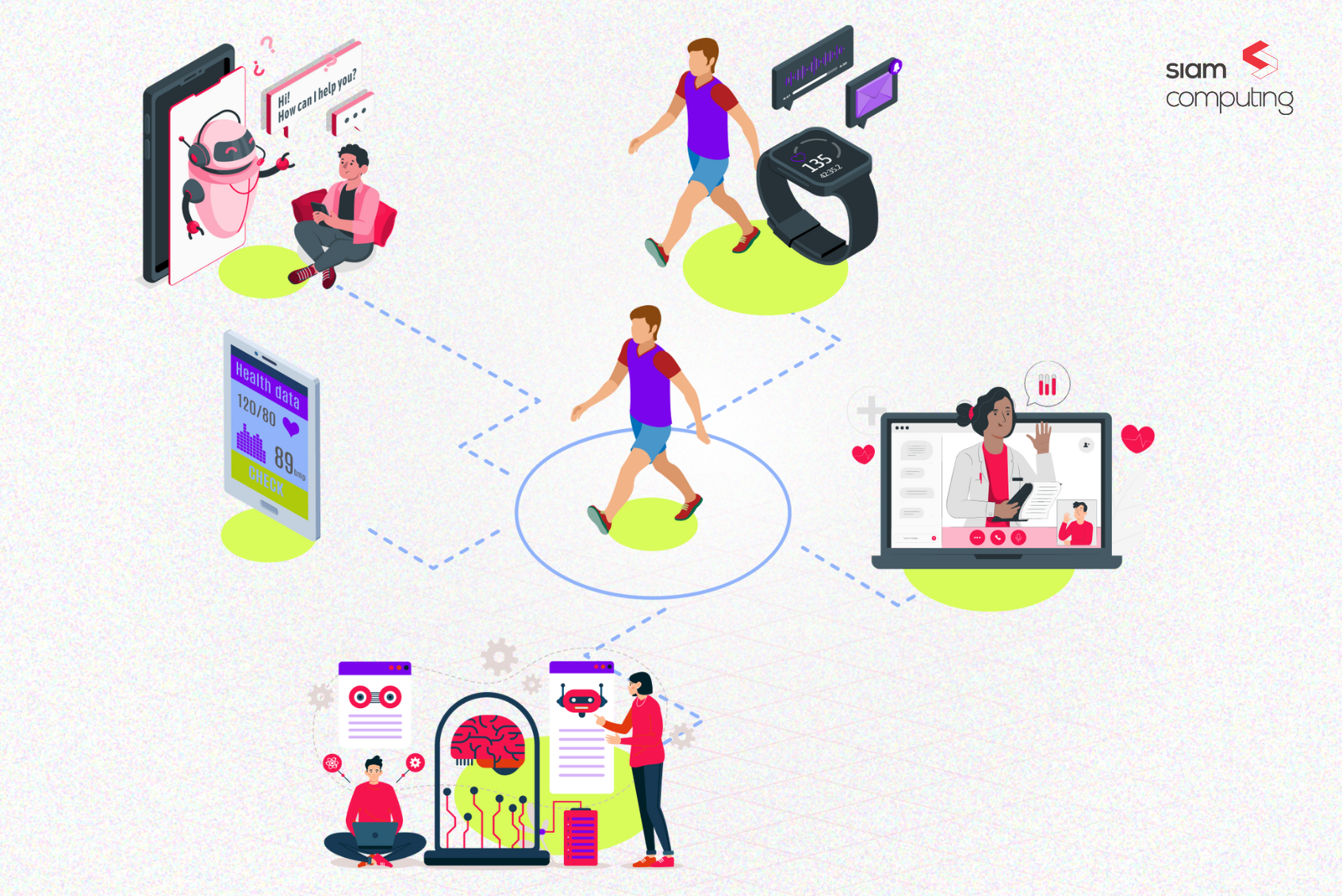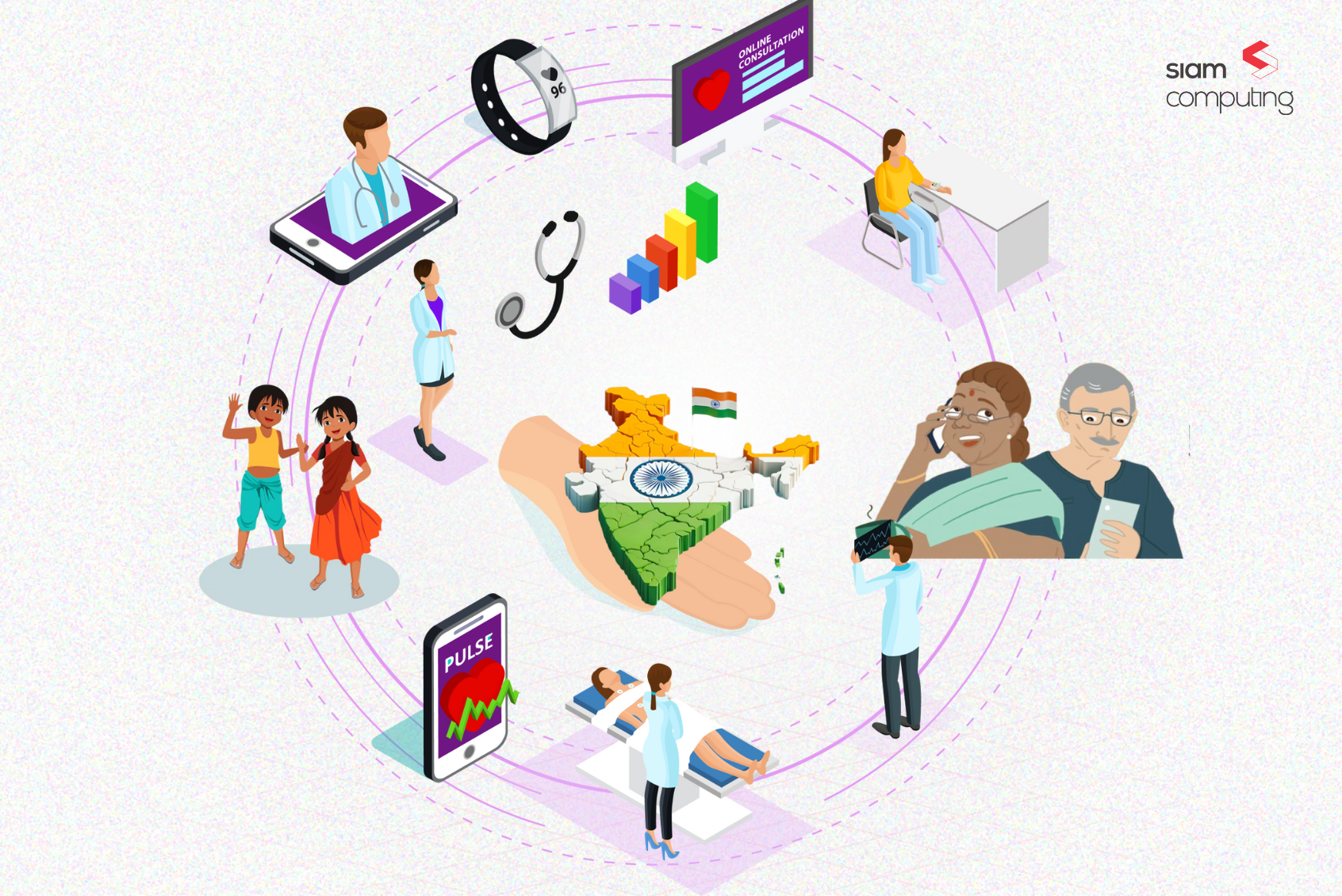India’s healthcare landscape is at a crossroads. While boasting a vast network of hospitals and clinics, challenges like affordability, accessibility, and fragmented care delivery persist due to the unsustainability of the existing fee-for-service (FFS) healthcare delivery model.
In this scenario, the global shift towards value-based care (VBC) presents a unique opportunity for healthcare institutions and health tech startups alike to unlock value generation by adopting patient-centric digital care delivery models.
This in-depth analysis delves into the intricacies of India’s healthcare system, explores the potential of VBC to address its shortcomings, and examines the crucial role health tech startups and product leaders can play in this critical journey.
FFS vs VBC - What's the Difference?
In the traditional fee-for-service (FFS) model, healthcare providers are reimbursed based on the volume of services they deliver. This can incentivize unnecessary procedures and tests, leading to more clinical visits, but not necessarily better patient outcomes.
Value-based care (VBC) flips the script. Providers are rewarded for the quality of care they deliver and not the quantity. The VBC model prioritizes keeping patients healthy and achieving positive health outcomes, rather than just treating them when they’re sick.
Cracks in the FFS Foundation
The current FFS model often neglects preventative care and long-term health outcomes. Despite its historical dominance, it has inherent flaws that have become increasingly unsustainable for patients and healthcare providers.
- High Out-of-Pocket Expenditure: A significant portion of healthcare costs falls on patients, with limited public and private insurance coverage. This creates a financial burden for a large portion of the population, hindering access to essential healthcare services.
- Overdelivery and Misaligned Incentives: FFS incentivizes volume over value. Providers earn more by performing more tests and procedures, regardless of their effectiveness in improving patient outcomes. This can lead to overtreatment, unnecessary healthcare costs, and potential harm to patients.
- Fragmented Care: FFS fosters a siloed approach where different healthcare providers often function in isolation. This lack of coordination leads to inefficiencies, duplication of services, and suboptimal patient care.
- Limited Focus on Prevention: FFS prioritizes reactive treatment over preventative measures. Patients with chronic conditions often fall through the cracks, leading to complications and higher costs down the line.
- Data Disconnect: The FFS model doesn’t incentivize effective data collection and analysis. This lack of insights hinders providers’ ability to identify high-risk patients, predict potential complications, and personalize treatment plans.
These limitations highlight the need for a paradigm shift in India’s healthcare payment system. Value-based care (VBC) emerges as a promising alternative with the potential to address these concerns and create a more efficient, effective, and patient-centered healthcare ecosystem.
The VBC Promise: A Value-Centric Healthcare Future for India
VBC flips the script on traditional healthcare reimbursement. Here’s how it can revolutionize India’s healthcare landscape:
- Improved Affordability: By incentivizing preventative care, chronic disease management, and reducing unnecessary interventions, VBC can help bring down overall healthcare costs. This aligns well with the Indian government’s initiatives to increase healthcare accessibility and reduce out-of-pocket expenditure.
- Enhanced Patient Engagement: VBC empowers patients to take charge of their health. It incentivizes providers to offer educational resources, self-management tools, and improved access to care, leading to better adherence to treatment plans and improved health outcomes.
- Focus on Chronic Disease Management: VBC prioritizes managing chronic conditions like diabetes and heart disease proactively. This can lead to a better quality of life for patients and a reduced healthcare burden on the system.
- Strengthened Primary Care: VBC thrives on a robust primary care system, serving as the first point of contact for patients and acting as a gatekeeper for referrals to specialists. Strengthening primary care infrastructure and workforce is crucial for successful VBC implementation.
- Integration of Traditional Medicine: India has a rich heritage of traditional medicine systems like Ayurveda, Unani, and Siddha. VBC can incentivize the integration of these practices with allopathic medicine for a more holistic approach to patient care.
- Data-Driven Decision Making: VBC embraces data analytics to optimize care delivery. Providers can leverage patient data to identify at-risk individuals, predict potential complications, and tailor interventions for improved outcomes.
The potential benefits of VBC for India’s healthcare system are extensive. However, transitioning from a well-established system like FFS to VBC requires careful consideration of the challenges involved.
Hurdles on the Road to Value: Implementing VBC
Several factors can hinder the smooth implementation of VBC models:
- Shifting Payment Models: Transitioning from FFS to VBC requires significant changes in payment structures and reimbursement policies. This can be disruptive for healthcare providers accustomed to the traditional system.
- Data Standardization and Interoperability: Effective data collection, analysis, and sharing are crucial for VBC’s success. However, healthcare systems often lack standardized data formats and interoperable electronic health record (EHR) systems, creating data silos.
- Short-Term vs. Long-Term Focus: FFS incentivizes immediate interventions, while VBC prioritizes long-term health outcomes. This can create tension between financial sustainability and investment in preventative care, a key VBC principle.
- Accountable Care Infrastructure: VBC models often require the formation of accountable care organizations (ACOs) – networks of providers working together to deliver coordinated care. Building and managing these ACOs require substantial infrastructure and operational changes.
- Evolving Regulatory Landscape: India’s healthcare payment systems are still at the infancy of transitioning towards VBC models. Clear and consistent regulations are needed to incentivize providers and ensure smooth implementation.
- Addressing Social Determinants of Health (SDOH): Factors like poverty, lack of education, and poor sanitation significantly impact health outcomes. VBC models need to consider the influence of SDOH and potentially integrate interventions that address these social factors to achieve optimal health outcomes.
- Provider Behavior Change: Shifting from FFS to VBC requires a change in mindset for healthcare providers. Training programs and support systems are needed to equip them with the skills and tools to thrive in this new paradigm.
Despite these challenges, the potential benefits of VBC have spurred significant momentum towards its adoption. Government regulations, private payer initiatives, and the growing emphasis on healthcare quality are all driving the VBC revolution.
Founders Must Look at Problems as Opportunities
The VBC landscape presents a multitude of opportunities for healthtech startups to develop innovative solutions that address the core tenets of this model. Here, we explore specific product categories with high growth potential:
1. Care Coordination Platforms
Fragmentation in healthcare delivery is a major hurdle addressed by VBC. Healthtech can play a pivotal role by developing platforms that:
- Facilitate secure communication: Enable seamless communication between patients, providers, specialists, and care teams, fostering a collaborative approach.
- Promote care plan management: Provide tools to manage and share personalized care plans across different healthcare settings, ensuring continuity of care.
- Support population health management: Offer functionalities for identifying high-risk patients, stratifying patient populations based on needs, and allocating resources effectively.
2. Remote Patient Monitoring (RPM) Solutions
VBC emphasizes proactive care management. RPM solutions can significantly contribute by:
- Enabling chronic disease management: Allow patients with chronic conditions to monitor vitals, track symptoms, and transmit data securely to their healthcare providers, facilitating timely interventions.
- Supporting virtual care delivery: Facilitate remote consultations, medication adherence monitoring, and patient education, expanding access to care beyond traditional clinical settings.
- Enhancing patient engagement: Empower patients to take an active role in managing their health by providing them with user-friendly interfaces and personalized feedback based on collected data.
3. Data Analytics and Artificial Intelligence (AI) Tools
Data is the lifeblood of VBC. Healthtech can provide solutions that:
- Aggregate and normalize patient data: Develop tools to collect and integrate data from various sources, including EHRs, wearables, and patient-reported outcomes, creating a holistic view of patient health.
- Leverage AI for risk prediction: Utilize AI algorithms to identify at-risk patients, predict potential complications, and personalize interventions for improved outcomes.
- Optimize resource allocation: Develop data-driven insights to optimize resource allocation, ensuring that patients receive the right care at the right time.
4. Patient Experience and Education Platforms
VBC recognizes the importance of patient empowerment. Healthtech can create solutions that:
- Deliver personalized health education: Provide patients with evidence-based educational resources tailored to their specific needs and conditions.
- Promote self-management: Develop tools that empower patients to track their health metrics, manage medications, and make informed decisions about their health.
- Foster behavior change: Utilize gamification elements and motivational techniques to encourage healthy behaviors and improve adherence to treatment plans.
5. Interoperability Solutions
Data silos impede effective VBC implementation. Healthtech can bridge this gap by:
- Developing APIs and data standards: Facilitate seamless data exchange between different healthcare IT systems, ensuring information can be shared securely and efficiently.
- Enabling patient-controlled data access: Empower patients to control their health data and securely share it with authorized providers and healthcare institutions.
- Promoting open-source platforms: Contribute to the development of open-source interoperability standards that foster wider adoption and data exchange across the healthcare ecosystem.
These are just a few examples, and the possibilities for health tech innovation in the VBC landscape are vast. To thrive in this new value-driven environment, health tech startups need to adopt a strategic approach focusing on the three A – affordability, accessibility, and availability.
- Affordable Digital Solutions: Developing cost-effective digital tools for remote patient monitoring, chronic disease management, and patient education can empower patients and improve care delivery efficiency.
- Availability in rural and semi-urban areas: Developing localized healthtech solutions catering to the specific needs of tier-2 and tier-3 cities can bridge the gap in healthcare access across the country.
- Accessibility to non-tech savvy demographics: Be mindful of the fact that digital solutions, while bridging the gap in geographical healthcare access across the country, may also end up creating inequality in healthcare access, especially in communities with low income and literacy levels.
The Future of Healthcare is Digital
The transition from FFS to VBC represents a paradigm shift in healthcare with far-reaching implications. VBC revolution offers a compelling path towards a more accessible, affordable, and patient-centered future. However, navigating this transition requires a deep understanding of the unique challenges and opportunities presented by the Indian context.
Siam Computing, a leader in healthtech product strategy has paved the product roadmap of many successful hospitals and healthcare startups. Our team of experts possesses a wealth of experience in developing innovative solutions that address the specific needs of the Indian healthcare landscape. We can help you identify niche markets, prioritize affordability and scalability, and ensure your solutions seamlessly integrate with existing systems.
Don’t navigate the complexities of VBC adoption alone. Contact Siam Computing’s product strategy experts today to discuss your health tech vision and explore how we can help you turn it into reality. Let’s build a healthier future for India, together.








